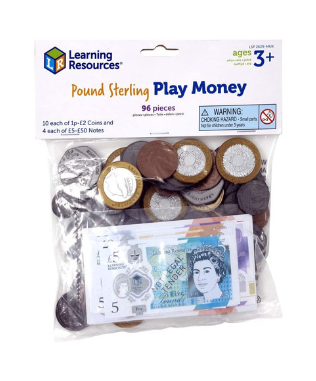Another open ended play challenge. This time they had 15 minutes to make as many doubles as they could. First, we recapped what they knew about doubles:
To get a double of a number, we add the same number to itself. For example, double of 3 is 3+3=6. The final quantity is double the initial.
Another way of doubling, is to multiply the number by 2. For example to double 3, or make it twice as big, you can calculate 3×2=6.
Resources
- Fraction rods
- Bath crayons
- Base 10 set
- Numicon
- Log slices with numbers and +, x and = written on
- Homemade Numberblocks characters
- Grimm’s small rainbow balls
- Grimm’s rainbow sorting board
- Money
- Home made ten grid
- Buttons
- Wooden dolls
Method
Finny found the first double, using the fraction rods. He doubled one half.
He used a bath crayon to help him write his sum out on the tray.
Finny then moved on to doubling 30. He used some ten rods from his base ten set to demonstrate.









Next, he doubled 9 and used the Numicon to show his working out.
Meanwhile, Ioan used his homemade Numberblocks to double 7.









Finny decided to double Cian’s wooden ball set, which had 12 balls in it.
Ioan doubled some notes of money.
Ioan finished off with the tattered old 10 grids that he made last year. They originally surrounded all the push out pieces in our Guess Who game, he just cut them to size. He had 6 buttons to double.
Finny’s final example involved some of their wooden dolls. He worked out what double 8 was.
They completed their tray with a reminder that doubling means you multiply by two.
DfES Outcomes for EYFS and National Curriculum (2013)
Numeracy Year 1 programme of study
Number – addition and subtraction
- read, write and interpret mathematical statements involving addition (+), subtraction (–) and equals (=) signs
- add and subtract one-digit and two-digit numbers to 20, including zero
Number – multiplication and division
- solve one-step problems involving multiplication and division, by calculating the answer using concrete objects, pictorial representations and arrays with the support of the teacher.
Numeracy Year 2 programme of study
Number – multiplication and division
- recall and use multiplication and division facts for the 2 times table


































